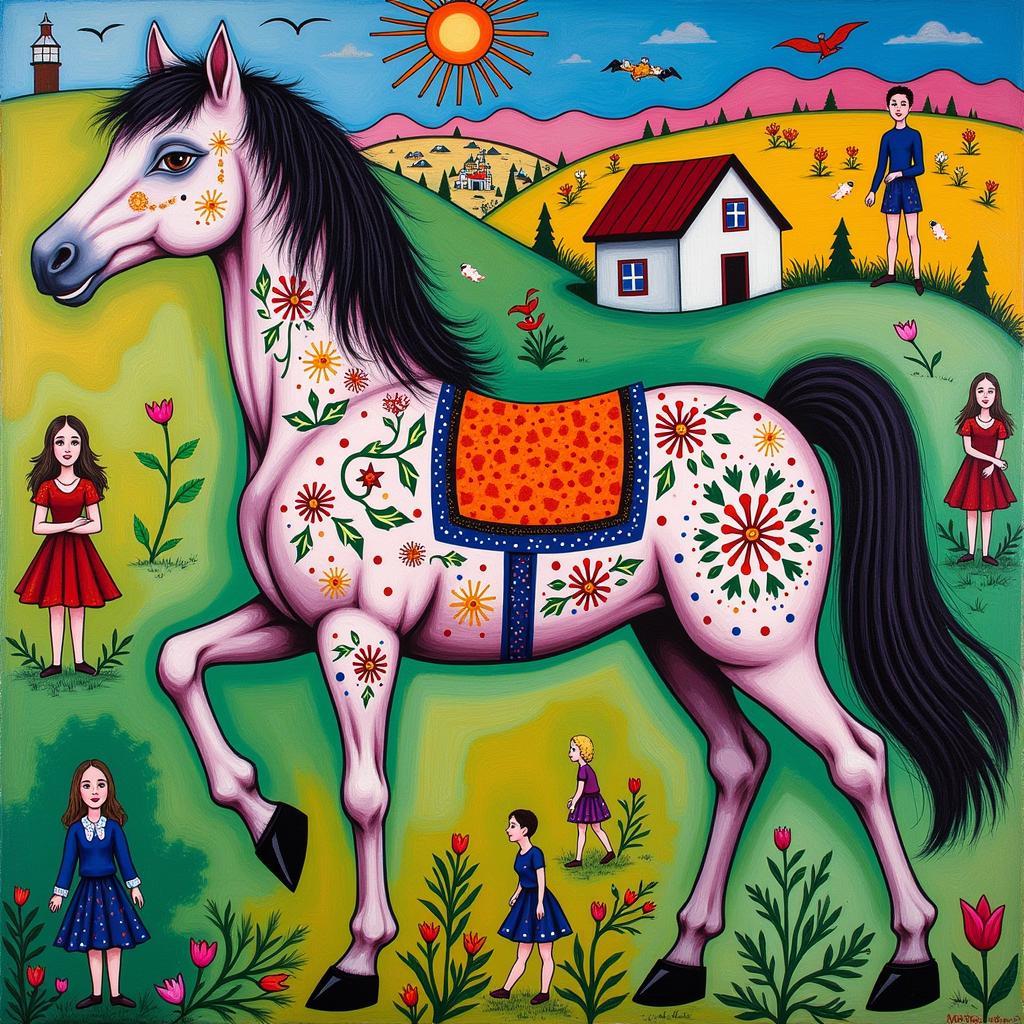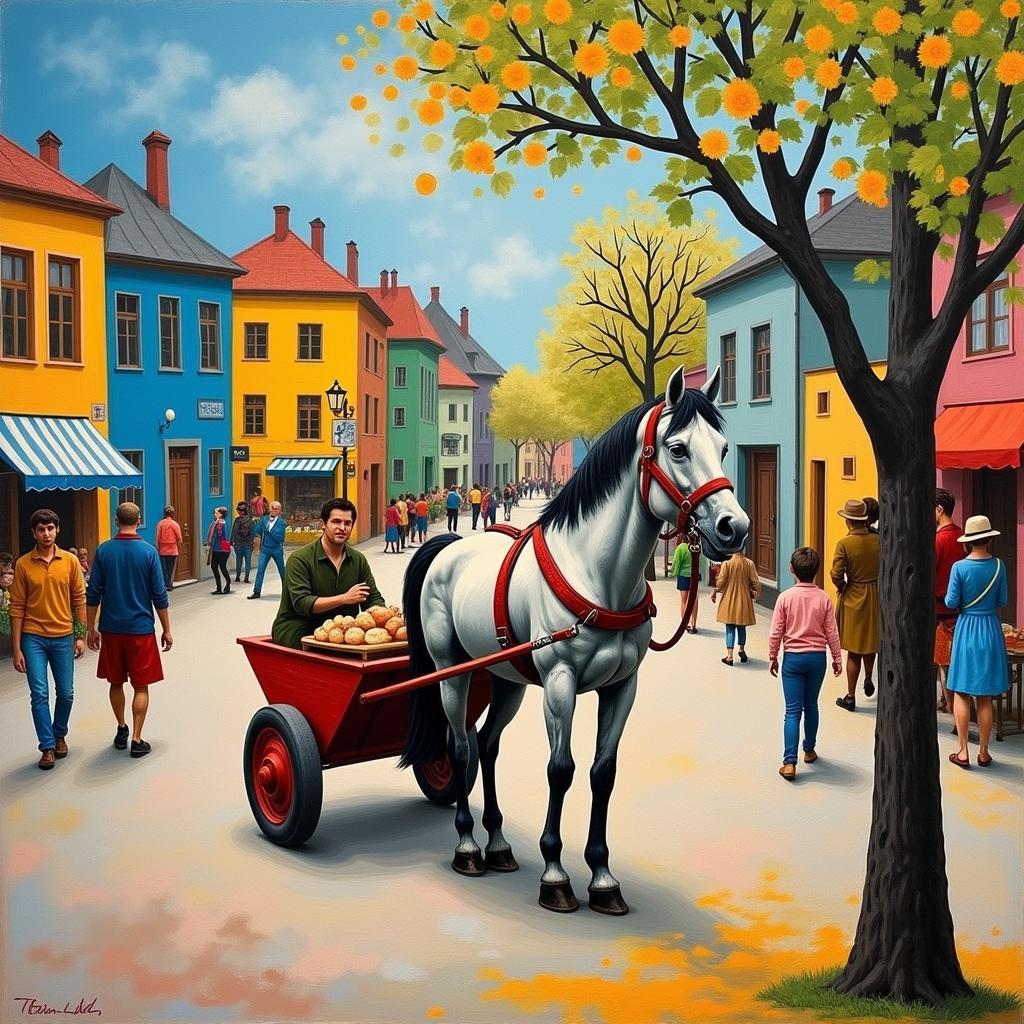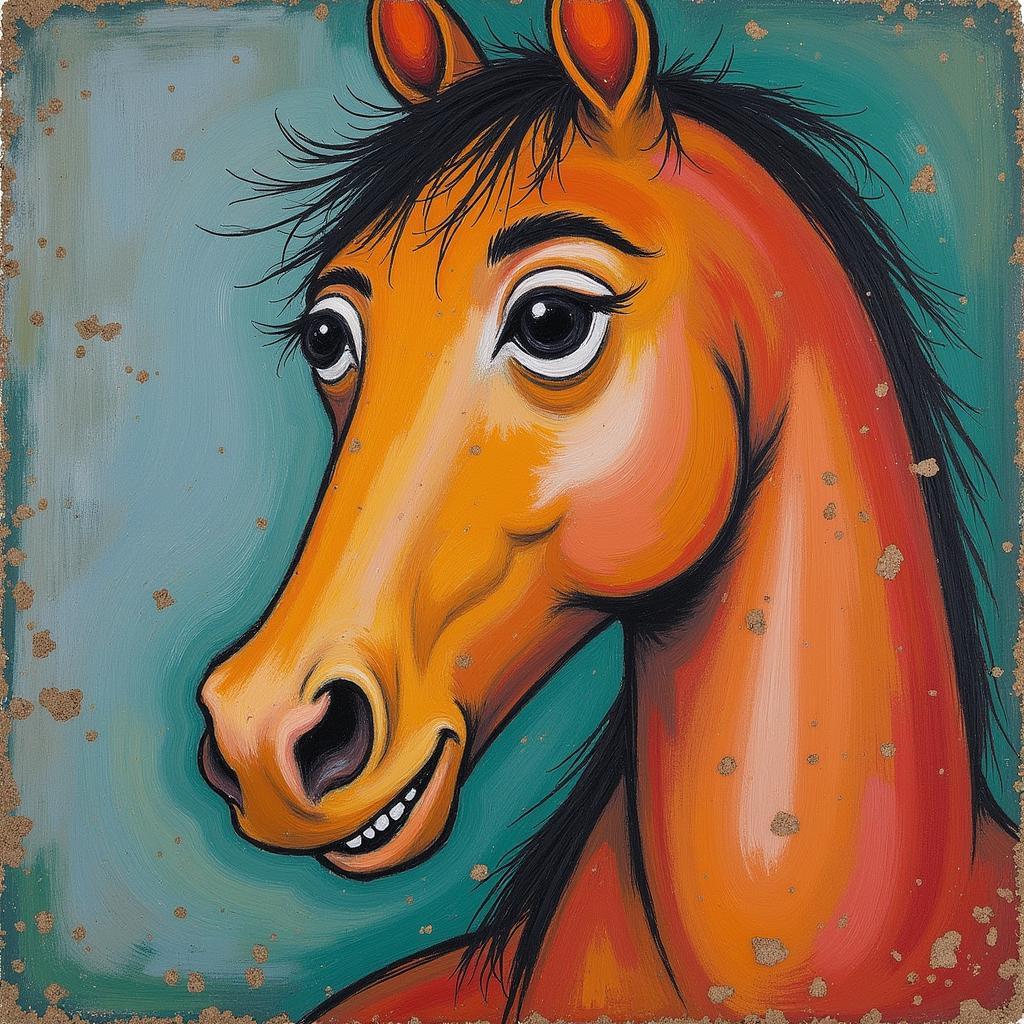Marc Chagall, the renowned Russian-French artist of the 20th century, is celebrated for his dreamlike paintings brimming with vibrant colors, whimsical figures, and recurring motifs. Among these recurring elements, the horse holds a prominent place, appearing throughout his artistic journey and carrying profound symbolic weight.
 Marc Chagall's Painting Featuring a Horse
Marc Chagall's Painting Featuring a Horse
The Horse as a Symbol in Chagall’s World
To understand the significance of the “Marc Chagall Horse,” we must delve into the artist’s background and the cultural context that shaped his artistic vocabulary. Born in 1887 in a small Jewish village in Belarus, then part of the Russian Empire, Chagall grew up surrounded by horses. They were not merely animals of burden but integral to daily life, symbolizing freedom, strength, and a connection to the land. This deep-rooted familiarity with horses left an undeniable mark on the young artist, weaving itself into the tapestry of his artistic expression.
 Marc Chagall's Painting of Village Life with Horse
Marc Chagall's Painting of Village Life with Horse
Flight, Fantasy, and Folklore: The Horse’s Multiple Roles
Chagall’s horses often transcend their physical form, becoming ethereal beings that soar through his canvases. In works like “Birthday” (1915) and “Over the Town” (1918), the horse takes flight, carrying lovers towards the heavens, symbolizing love, escape, and the transcendence of earthly limitations. This recurring motif of the flying horse, deeply rooted in Jewish folklore and mythology, showcases Chagall’s fascination with dreams, fantasy, and the power of imagination.
Beyond its association with love and flight, the horse in Chagall’s paintings also represents his cultural heritage. In works like “I and the Village” (1911) and “The Green Violinist” (1923-24), horses are depicted as integral parts of the shtetl, the Eastern European Jewish communities where Chagall grew up. These horses, often depicted with a sense of melancholic nostalgia, serve as visual reminders of a vanished world, evoking themes of memory, tradition, and the enduring spirit of a people.
The Enduring Appeal of Marc Chagall’s Horses
The enduring appeal of “Marc Chagall horse” lies in its multifaceted symbolism and its ability to resonate with viewers on a deeply emotional level. Whether soaring through the sky, strolling through a village, or gazing at us with knowing eyes, Chagall’s horses are more than just animals; they are vessels of emotion, symbols of hope and longing, and reflections of the artist’s own experiences and dreams.
 Detail of a Horse in Marc Chagall's Painting
Detail of a Horse in Marc Chagall's Painting
Conclusion
Marc Chagall’s horses, imbued with a unique blend of realism and fantasy, continue to captivate art lovers worldwide. They stand as testaments to the enduring power of art to transcend cultural boundaries and speak to the universal human experience of love, loss, memory, and the search for meaning in a complex world.
FAQs
1. What other animals are common in Chagall’s work?
Besides horses, Chagall often depicted roosters, goats, cows, and fish, all drawn from his childhood memories and carrying symbolic weight within his artistic language.
2. Where can I see Marc Chagall’s paintings featuring horses?
Museums worldwide, including the Museum of Modern Art (MoMA) in New York City and the Musée National Marc Chagall in Nice, France, house significant collections of his work.
3. Did Chagall ever explain the meaning behind his horse imagery?
While Chagall did not explicitly define his symbols, he believed that art should speak for itself, allowing viewers to bring their own interpretations and emotional responses to his work.
4. Are there any books or resources that delve deeper into Chagall’s life and work?
Yes, numerous books and scholarly articles explore Chagall’s artistic journey, symbolism, and the cultural influences that shaped his vision.
5. Did Chagall’s use of the horse motif change over time?
The horse remained a constant presence throughout Chagall’s career, though its representation evolved, reflecting shifting personal experiences and artistic explorations.
For further assistance, please contact us at Phone Number: 0772127271, Email: [email protected], or visit us at QGM2+WX2, Vị Trung, Vị Thuỷ, Hậu Giang, Vietnam. We have a 24/7 customer support team ready to help.